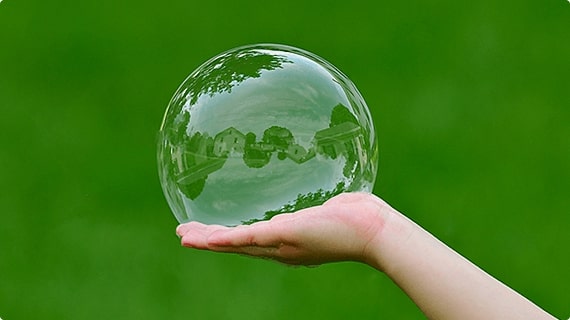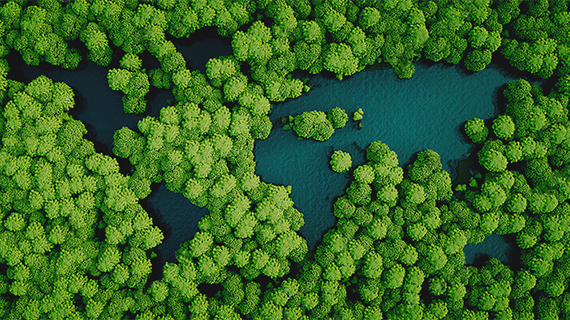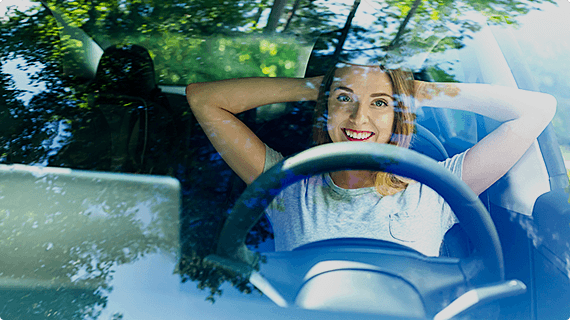- Basic Environmental Philosophy/Environmental Proclamation/Environmental Policies
- Environmentally-Friendly Product Development
- Environmental Reports
- Green Procurement
- Disclosure based on TCFD recommendations
- HOME /
- Sustainability /
- Environment /
- Environmentally-Friendly Product Development
Environmentally-Friendly Product Development
Stanley will contribute to the future of humankind and the global environment by creating new value with light
Design for Environment
Life Cycle Assessment (LCA)
Promoting design for the environment through the use of a checklist
In order to promote the manufacture of products designed for the environment we use our Design for Environment Guidelines and apply them to the full range of our product design.
Based on this guideline, we have prepared a Checklist for Design for the Environment and the designer himself quantitatively evaluates the following six items: (1) energy conservation, (2) environmental conservation, (3) reducing, (4) reuse and recycling, (5) packaging, and (6) provision of information. Furthermore, we are reducing the environmental load as much as possible.
The checklist also makes it possible to understand the amount of CO2 emitted from the procurement of raw materials and parts to the manufacture of products and delivery to customers.
Overview of the Evaluations
Evaluations via Checklists As indicated in the figure on the right, we perform quantitative evaluations for different items on a five-point scale in the aim of creating more products designed for the environment.
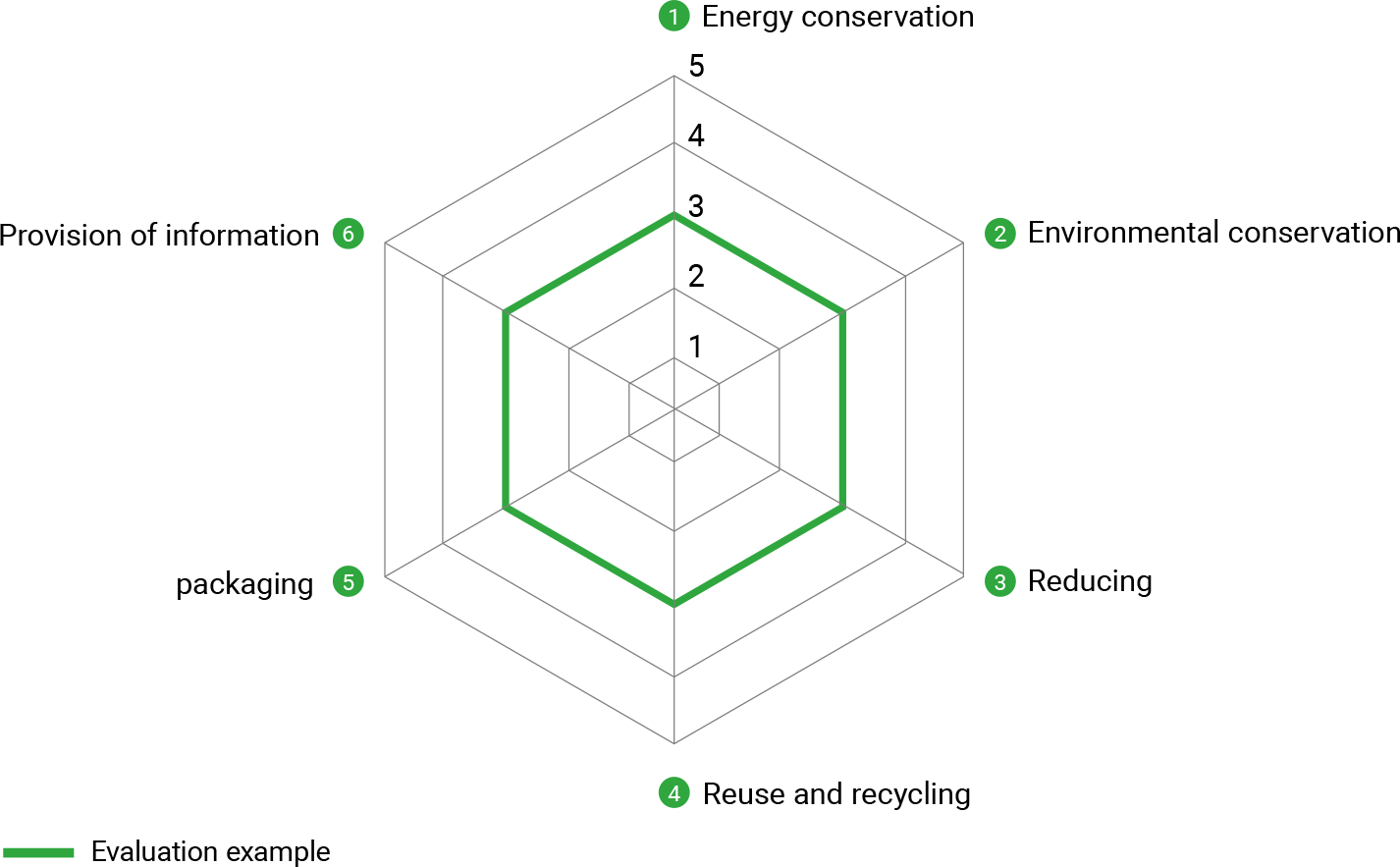
*Supplement to the evaluation items
environmental conservation
We must meet standards like the REACH Regulations and ROHS Directive. But over and above these, we are aiming to meet our own, even stricter, voluntary standards.
provision of information
We disclose environmental items that warrant attention as stipulated by law. On top of this, we aim to disclose information based on the guidelines of industry associations and the like.
Changes in the proportion of products designed for the environment
The percentage of our sales accounted for by products designed for environment is shown in the above graph.
Our share of sales of environmentally friendly products has been rising year by year as a result of the increase in sales of headlamps that use LEDs, and now account for more than 70% of our products.
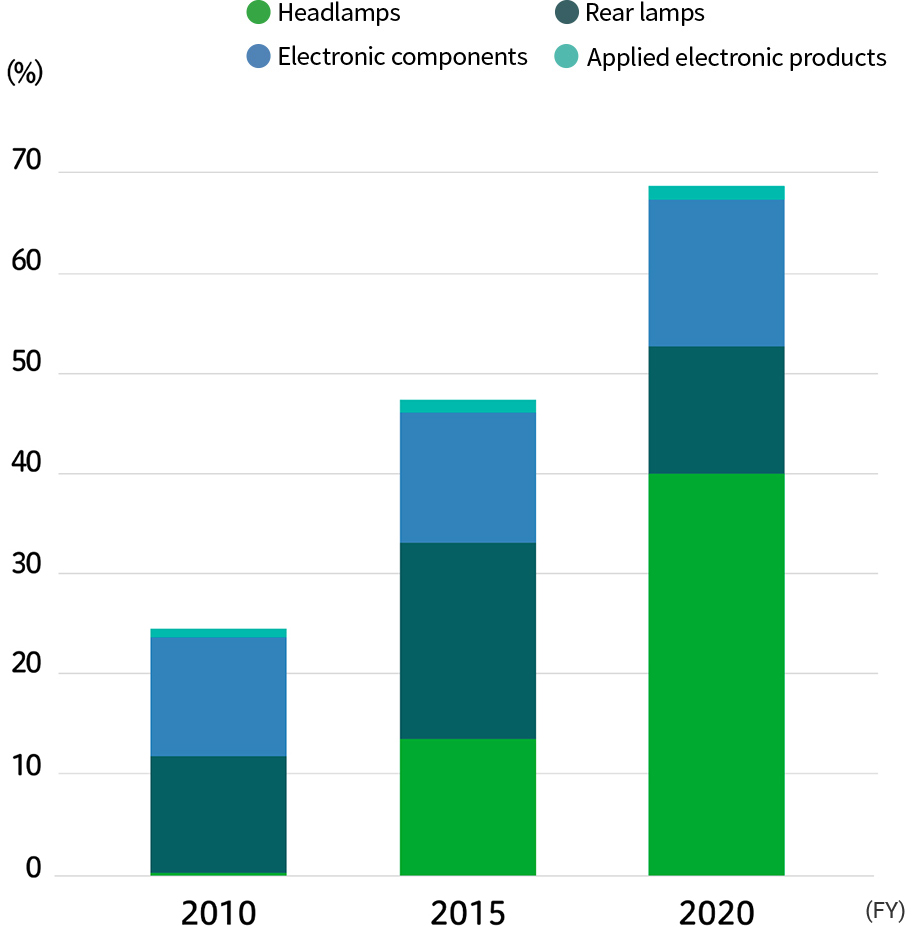
Products designed for the environment
Size and Weight Reduction
Through research into the materials used and other means, we are engaged in the development of smaller and lighter products that maintain the same levels of product life span and luminous efficiency. These smaller, lighter products are also contributing to the reduction of CO2 emissions, raw material usage reductions, and otherwise helping to reduce our environmental footprint in our manufacturing processes, transport, and end-of-life disposal.
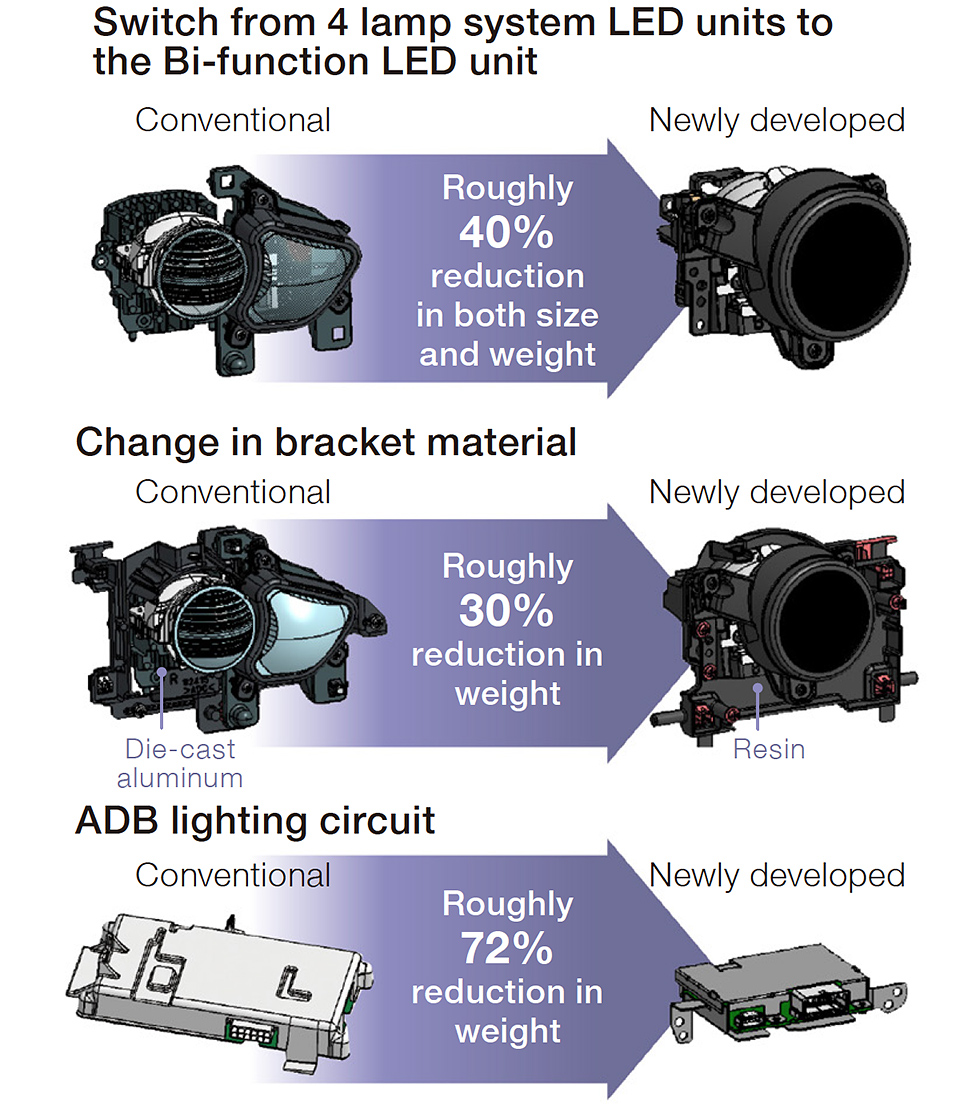
Energy Conservation and Efficiency Improvements
In addition to adopting LEDs as the light source for automobile lamps, we are also engaged in the development of highly efficient, energy-saving products through the use of the light distribution technologies that are our strengths to achieve non-wasteful use of light. Our energy-saving products are helping to reduce CO2 emissions and contributing to the prevention of global warming.
Changes in headlamp power consumption (W/unit)
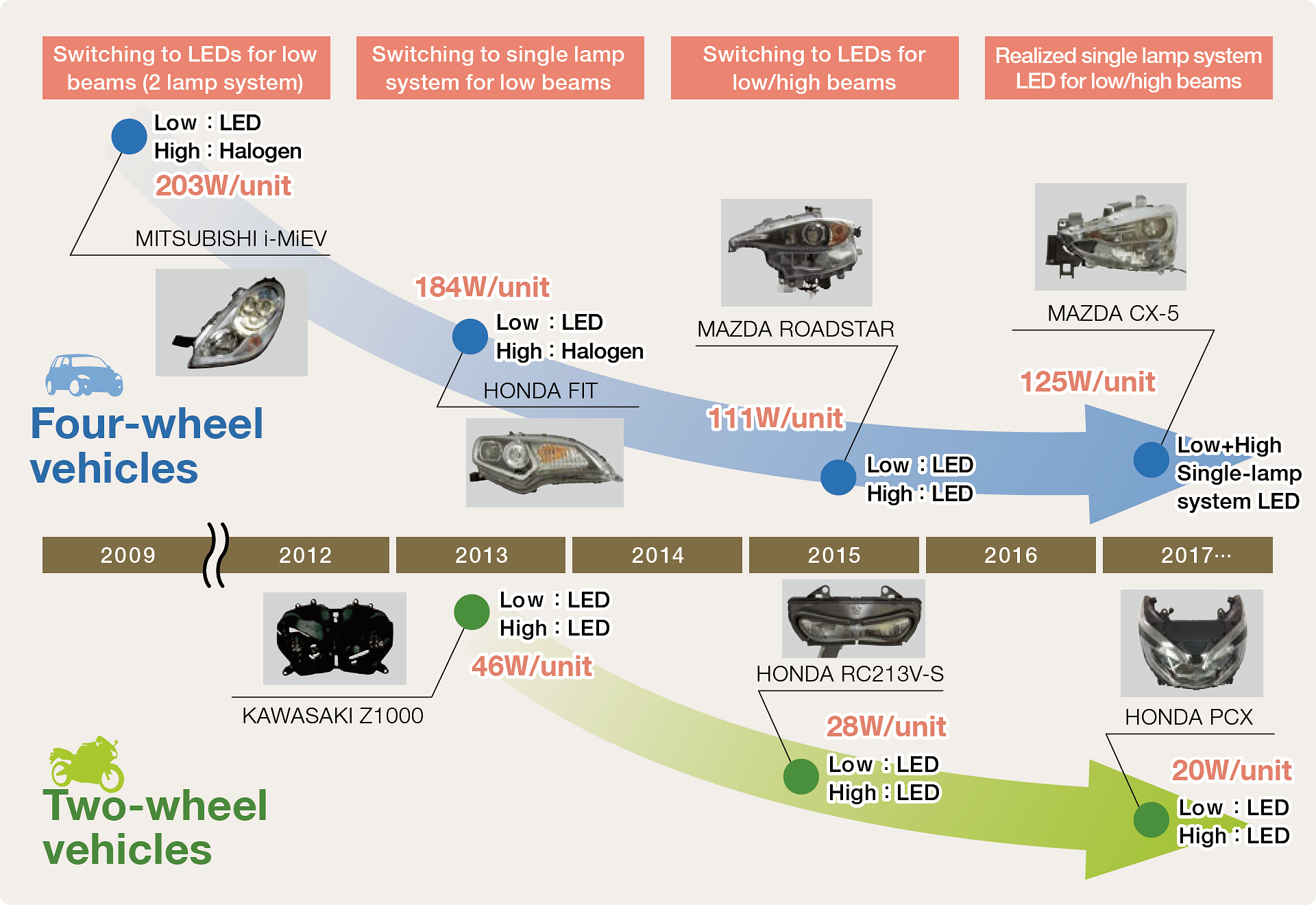
* Headlamp power consumption is measured not just for the low/high beams, but for the headlamp as a whole, including position lamps and turn signal lamps
Reduction in power consumption with LED lamps
-43%
compared with halogen lamps
-30%
compared with HID lamps
Water Quality Preservation Initiatives
Stanley provide safe, secure water through UV sterilization. We are engaged in the development of high-output UV light sources, which have wavelengths that destroy bacteria efficiently. We contribute to water quality preservation through UV-LED and UV-CCL light sources and proposals for reactors and other applied products.
Water Sterilization Product Applications
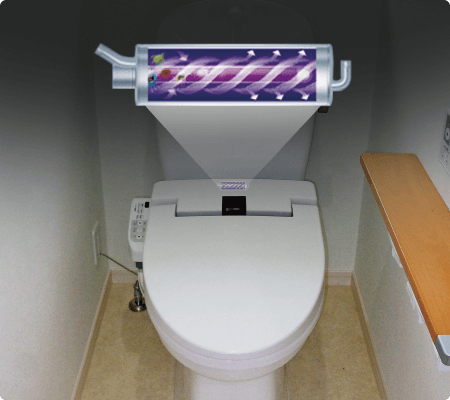
Bidet-function toilets
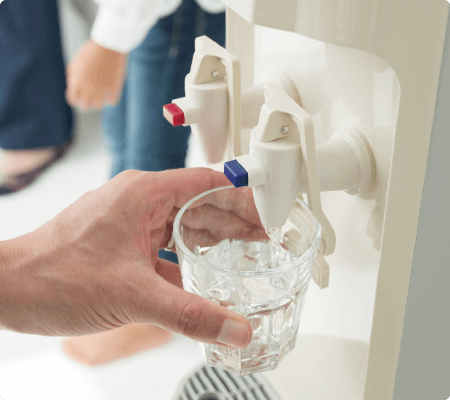
Drink dispensers
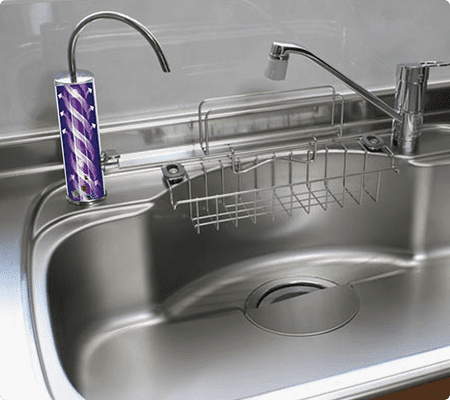
Faucets and water purifiers
